Welcome to the ultimate guide to Hyperlocal Social Media Marketing, the game-changer for businesses looking for unparalleled connectivity with their target audience.
In this comprehensive discussion, we will delve into the complexities of hyperlocal marketing strategies, emphasize their importance, and delve into actionable measures for propelling business growth in your neighborhood.
We’ve seen the best AI software for video editing, marketing, recruiting, students, and credit repair in recent articles. Now, let’s have a look at some of the most prominent hyperlocal social media marketing strategies:
Let us begin this journey right away!
What is Hyperlocal Social Media Marketing?

Understanding Hyperlocal Social Media Marketing
Hyperlocal Social Media Marketing:
- Localized approach targeting specific geographic areas.
- Focuses on building deep connections with local audiences.
- Aims to engage customers on a personal and intimate level.
Inclusivity and Customization:
- Enterprises tailor content to match local preferences and affinities.
- Customized approach creates a sense of inclusivity and trust.
- Leads to heightened brand loyalty and increased customer retention.
Coffee Shop Example:
- Utilize hyperlocal marketing for a coffee shop in a bustling neighborhood.
- Craft social media posts aligned with local customer preferences.
- Highlight neighborhood events to foster community engagement.
- Leverage community connections to enhance brand visibility
Significance and Benefits of Hyperlocal Social Media Marketing
- Consolidated Brand Identity: By resonating with local customs, enterprises fashion a robust brand identity within the community.
- Augmented Customer Allegiance: Personalized experiences cultivate profound emotional bonds, resulting in escalated customer loyalty.
- Escalated Foot Traffic and Sales: Hyperlocal social media marketing beckons local customers to embark on pilgrimages to physical stores, propelling foot traffic and accentuating sales.
- Precision Targeting: Enterprises can pinpoint precise demographics, interests, and behaviors, enlivening more efficacious advertising campaigns.
Hyperlocal Social Media Marketing v/s Traditional Marketing
| Hyperlocal Marketing | Traditional Marketing |
|---|---|
| Targets a Specific Geographic Area | Targets a Wide and Diverse Audience |
| Personalized Content and Messaging | Generalized and Broad Messaging |
| Focused on Community Connections | Less Emphasis on Local Connections |
| Niche and Targeted Approach | Mass Appeal and Broad Campaigns |
Why is Hyperlocal Marketing Important for Businesses?
Hyperlocal social media marketing is an effective strategy for helping businesses can reach and interact with prospective clients within a particular geographic area. Companies may boost brand awareness, customer loyalty, and sales by creating and delivering content that is relevant, personalized, and tailored to the local audience.
1. Target the Right Audience
- Hyperlocal marketing enables businesses to pinpoint and connect with individuals interested in their products or services using location-based data and targeting tools.
- Avoid wasting resources on irrelevant or uninterested audiences.
2. Increase Customer Engagement
- Create content that resonates with the local audience’s preferences, interests, and needs.
- Foster stronger relationships, trust, and social media interactions, making the brand more relatable.
3. Drive Foot Traffic and Sales
- Offer local deals, promotions, and incentives to entice customers to visit physical locations and make purchases.
- Create a sense of urgency and exclusivity, leading to word-of-mouth marketing within the local community.
4. Stand Out from the Competition
- Focusing on a specific geographic area differentiates businesses from competitors targeting broader or different markets.
- Establish a unique value proposition and a loyal customer base.
How to Implement Hyperlocal Marketing Effectively?
1. Identify Relevant Hyperlocal Platforms
- Research and select suitable hyperlocal social media platforms for the target audience, such as Facebook, Instagram, Twitter, Yelp, Google My Business, Nextdoor, etc.
2. Create Localized Content
- Develop content that is engaging, informative, and relevant to the local audience.
- Utilize local keywords, hashtags, images, videos, and stories that reflect local culture, trends, events, and news.
3. Optimize Social Media Profiles
- Enhance social media profiles’ visibility and attractiveness to the local audience.
- Include location, contact information, hours of operation, website links, and encourage customer reviews, ratings, and feedback.
4. Run Targeted Ads
- Launch targeted ads on hyperlocal social media platforms to reach ideal customers.
- Utilize location-based targeting options like zip codes, radiuses, geo-fences.
- Craft compelling ad copy, images, videos, and calls-to-action highlighting local offers and benefits.
5. Track and Analyze Performance
- Monitor the performance of hyperlocal social media marketing campaigns using metrics like impressions, reach, clicks, conversions, and engagement rate.
- Employ tools like Google Analytics, Facebook Insights, Instagram Insights, etc., to measure and improve results.
Identifying relevant platforms, creating localized content, optimizing profiles, running targeted ads, and tracking and analyzing performance are all necessary steps in effectively implementing hyperlocal marketing.
How can I target a Hyperlocal Audience on Social Media?
Hyperlocal social media marketing targets potential customers within a specific geographic area, enhancing brand awareness and local sales.
Focuses on engaging local consumers who are more likely to visit physical stores or use services.
To target a hyperlocal audience on social media, you must take a few steps that will assist you in optimizing your online presence and connecting with your local community.
Here are some pointers on how to go about it:
1. Create a Local Business Profile
- Establish profiles on platforms like Google My Business, Facebook, Instagram, and Twitter.
- Provides relevant information such as address, phone number, website, hours of operation, and reviews.
- Post updates, offers, events, and product/service showcases.
- Highlight unique value proposition.
2. Use Geo-Targeting Features
- Utilize tools like Facebook Ads, Instagram Ads, and Twitter Ads to target local audiences based on location, demographics, interests, and behaviors.
- Incorporate location-based hashtags, keywords, and tags to boost visibility and organic traffic.
3. Engage with the Local Community
- Join or create groups, pages, or events related to your niche or area on platforms like Facebook Groups, LinkedIn Groups, Meetup, and Eventbrite.
- Host local events, workshops, webinars, or networking sessions.
- Build relationships with the audience and showcase expertise.
- Participate in local conversations, answer questions, share valuable content, and provide support.
4. Leverage User-Generated Content
- Encourage customers to share their experiences on social media through contests, giveaways, challenges, or campaigns.
- Reward them for posting reviews, testimonials, photos, videos, or stories featuring products or services.
- Repost or reshare user-generated content on your own channels.
- Express gratitude for loyalty and advocacy.
5. Measure and Optimize Performance
- Track and analyze social media metrics and insights using tools like Google Analytics, Facebook Insights, Instagram Insights, and Twitter Analytics.
- Monitor reach, engagement, conversions, and revenue from hyperlocal social media marketing efforts.
- Use management tools like Sprout Social, Hootsuite, or Buffer to schedule posts.
- Utilize data to refine strategies based on audience preferences and behaviors.
Hyperlocal social media marketing is a powerful strategy for local differentiation and business growth. Following these guidelines, businesses can establish a strong online presence and meaningful connections with their local audience, ultimately distinguishing themselves from the competition in their area.
Also Read 👇🏻
- Best AI Tools for Sales: Boost your revenue overnight! (2023)
- Best AI Tools for Business in 2023
- Best YouTube Video Downloader Online in 2023
- Best AI Photo Editing Software in 2023
- Best AI Image Generator Tools (2023)
What are some Successful Hyperlocal Social Media Marketing Examples?
Hyperlocal social media marketing is a digital strategy that targets specific geographic areas or communities to engage potential customers within that locality.
Creating relevant and appealing content tailored to the local audience can enhance brand awareness, customer engagement, and sales conversions.
Some successful examples of hyperlocal social media marketing campaigns and how they met their objectives.
Example 1: Hardee’s Local Deals
- Hardee’s, a US-based fast-food chain, effectively employs hyperlocal marketing by offering exclusive local deals through social media.
- By targeting specific locations and promoting limited-time, in-store promotions after 2 pm, Hardee’s creates a sense of urgency and proximity to attract nearby customers.
Example 2: Lidl Local Coupons
- Lidl, a global discount supermarket chain, utilizes hyperlocal marketing to reward loyal customers and drive foot traffic.
- They share location-specific coupons for $1 OFF a gallon of milk, specifying valid store locations for customers to redeem the discount.
Example 3: The Bouqs Company Local Store Announcement
- The Bouqs Company, an online florist, expands its market reach using hyperlocal marketing by targeting Chicago with tailored content.
- They announce their presence in the city and invite customers to shop online or visit their in-store location in River North, creating a sense of exclusivity and convenience for local customers.
By examining successful examples like those mentioned above, businesses can learn how to create hyperlocal social media marketing campaigns that enhance brand awareness, customer engagement, and sales conversions.
What tools can help with Hyperlocal Social Media Marketing?
In this section, we will explore some of the best tools that can help you with hyperlocal social media marketing.
Geo-Targeting Tools
1. Facebook Ads
- Facebook Ads offers local awareness ads that target users near your business location.
- Location extensions display address, phone number, and directions in ads.
- Provides detailed campaign analytics and audience behavior insights².
2. Google Ads
- Google Ads utilizes location targeting to reach users in or near specific areas.
- Offers location extensions to display business information in ads.
- Features like call-only ads, local inventory ads, and local campaigns drive actions from local customers.
3. Snapchat Ads
- Snapchat Ads is effective for hyperlocal marketing to a younger, engaged audience.
- Geofilters allow the creation of custom overlays for users in specific locations.
- Snap ads are full-screen video ads with swipe-up capabilities for website or app visits.
Local Influencer Marketing Tools
1. Influence.co
- Influence.co connects brands with influencers across niches and locations.
- Search for local influencers based on location, category, audience size, and engagement rate.
- Browse portfolios, reviews, rates, and contact influencers directly on the platform.
2. AspireIQ
- AspireIQ facilitates brand collaboration with local influencers.
- Discover influencers matching specific criteria, including location and audience demographics.
- Manage campaigns, track results, and measure ROI through the platform.
3. Upfluence
- Upfluence offers access to over 4 million influencers globally.
- Find local influencers based on location, keywords, hashtags, and social media platforms.
- Analyze profiles, reach out via email, and monitor campaign performance through the platform.
Local SEO Tools
1. Moz Local
- Moz Local manages local business listings across platforms like Google My Business, Facebook, and Yelp.
- Ensures accurate, consistent, and up-to-date business information.
- Monitors and responds to customer reviews, tracks rankings, and measures performance.
2. BrightLocal
- BrightLocal assists in managing local business listings and reviews on over 70 platforms.
- Audits and updates listings, monitors and responds to customer feedback, generates positive reviews, and analyzes reputation score.
3. SEMrush
- SEMrush provides comprehensive local SEO tools, including keyword research, competitor analysis, site audits, and backlink analysis.
- Optimizes Google My Business profiles and offers various SEO-related features.
Leveraging Hyperlocal Social Media Marketing

Identifying Your Target Hyperlocal Audience
Embarking on a successful hyperlocal marketing sojourn necessitates pinpointing your target audience within your vicinity. Engage in the ensuing steps to discern your hyperlocal audience:
- Conduct Local Market Research: Assemble data on local demographics, interests, and purchasing behavior.
- Utilize Social Media Insights: Leverage analytics on platforms like Facebook and Instagram to glean invaluable intelligence about your audience.
- Partake in Local Conversations: Commingle with local community groups and discussions to grasp the exigencies and aspirations of potential patrons.
Crafting Engaging Content for Local Audiences
Once you’ve determined your target audience, you must create content that speaks to their hearts. Consider the following strategies:
- Employ Local Language and References: Integrate local vernacular or references familiar to your audience.
- Highlight Community Involvement: Spotlight your enterprise’s engagement in local events and initiatives.
- Foster User-Generated Content: Encourage patrons to share their experiences, engendering authentic and captivating content.
Choosing the Right Social Media Platforms for Hyperlocal Marketing
The most effective way to reach your hyperlocal audience is to use the best social media platforms. Platforms cater to specific demographics and interests. Consider the following points:
- Facebook: A versatile platform encompassing diverse demographics, perfect for community engagement.
- Instagram: Tailored for visual content, catering to a younger, visually-oriented audience.
- Twitter: Ideal for real-time updates and participation in local discourses.
Implementing your hyperlocal marketing strategy

Here are some simple tips for effectively implementing your hyperlocal social media marketing strategy.
Choose the right social media platform for you
There are numerous social media platforms to choose from; however, you should select one where you can find a large number of people in your target market. Facebook is clearly the best platform for many local businesses’ hyperlocal marketing strategy.
Moreover, with the recent improvements made by Facebook to Graph Search and the introduction of local awareness ads, Facebook has emerged as the best choice for hyperlocal social media marketing strategy. However, you should not overlook other major social media platforms for your campaign.
Attain hyper-local scale
The goal of hyperlocal social marketing is to communicate personalized messages to local residents. To communicate with the people, hyper-local social media pages should be created, translating the brand’s voice to the local level.
This will not be an easy task because the message must be communicated at the local level without losing the essential characteristics of the brands.
Be specific about what you hope to achieve with your marketing campaign.
Reasons for Hyperlocal Social Media Marketing:
There are two primary objectives: increase brand awareness and product sales.
Raising Brand Awareness:
- Promote valuable content to reach a wider audience.
- Build relationships with current and potential customers.
- Sharing posts and interactions foster a positive brand image.
Increasing Product Sales:
- Build rapport with the target market first.
- Transition conversations into sales interactions.
- Offer product options to solve customer problems effectively.
Evaluating and Driving ROI
Campaign Assessment:
- Evaluating campaign success is crucial after investing effort.
- Success depends on alignment with marketing objectives.
- Goals may include reaching a local audience or increasing sales.
Assessing Message and Response:
- Analyze the message delivered to the target market.
- Evaluate how the target market responded to the message.
- Desired response indicates campaign success; correlation matters.
Focus on Repeat Customers:
- Aim to convert local customers into repeat customers.
- Achieving this creates a consistent cash flow for the business.
- Long-term customer relationships contribute to sustained success.
Also Read 👇🏻
- Best YouTube Video Downloader Online in 2023
- Best AI Tools for Business in September 2023
- Best Issue-Tracking Software of 2023
- Best AI Recruiting Tools for Future-proof Hiring Process (2023)
Use of locally-driven paid media
Local-Driven Paid Advertising:
- Ideal for QSR brands and local retailers targeting nearby customers.
- Increases sales through special offers and discounts promotion.
Promoting Engagement and Awareness:
- Advertise local events and new store openings to locals.
- Build awareness and excitement within specific geographic areas.
Customer Satisfaction and Referrals:
- Satisfying customers can lead to word-of-mouth referrals.
- Positive social media experiences lead to 71% recommending the brand.
Real-Time Engagement on Social Media:
- Social media platforms enable real-time interaction with potential customers.
- Share store location, address customer queries, and provide information.
Building a Hyperlocal Social Media Strategy

Setting Clear Objectives and Goals
Every successful hyperlocal marketing campaign begins with clear objectives and goals. Plan your goals, whether they are increased foot traffic, increased online sales, or increased brand awareness.
Researching Local Competitors and Industry Trends
Keeping a competitive edge in the hyperlocal domain necessitates close monitoring of local competitors and industry trends. Examine your competitors’ strategies, looking for gaps that can be exploited. Furthermore, keeping up with local trends allows you to fine-tune your offerings accordingly.
Creating a Content Calendar for Consistency
The key to successful hyperlocal social media marketing is “consistency“. Create a content calendar to ensure consistent posts, event announcements, and promotions. The coherence that results strengthens your presence and captivates your audience.
Optimizing Local SEO for Social Media
Grasping the Role of Local SEO in Social Media Marketing
Local SEO exemplifies the catalyst propelling your social media presence within your vicinity. Comprehending its mechanics shall aid in harnessing its advantages:
- Location-Based Search: Google and akin search engines prioritize location-based results, catering to users’ local inquiries.
- Geo-Targeting: Social media platforms furnish enterprises the means to target users based on their geographic location, augmenting audience reach.
Implementing Location-Based Keywords and Hashtags
In order to increase local visibility, incorporate location-based keywords and hashtags into your social media posts. Use tools like Google Keyword Planner to find popular local search terms.
Encouraging User-Generated Content with Local Focus
User-generated content adds credibility to your hyperlocal marketing efforts. Encourage customers to share their experiences with your business and the community by posting reviews, testimonials, and photos.
Creating Engaging Hyperlocal Campaigns
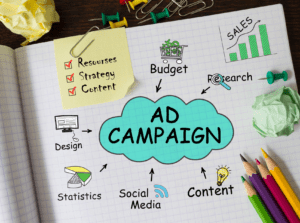
Hosting Local Events and Promotions
Hosting local events and promotions is a prime example of fostering community engagement. Examine the following suggestions:
- Community Clean-Up: Organize a local clean-up event to evince your enterprise’s commitment to the neighborhood’s well-being.
- Charity Fundraiser: Collaborate with a local charity to orchestrate a fundraising event, raising awareness and propitiating a worthy cause.
Showcasing Local Testimonials and Success Stories
Local testimonials and success stories help to strengthen your brand’s credibility. Showcase satisfied customers’ experiences in the community to inspire others.
Collaborating with Local Influencers and Partners
Leveraging local influencers and business partners expands your hyperlocal reach. The fusion of forces with well-known community figures and enterprises amplifies your message.
Analyzing and Measuring Hyperlocal Campaigns
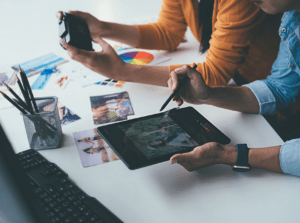
Utilizing Social Media Analytics Tools for Local Insights
Social media analytics tools proffer a trove of data to gauge the performance of your hyperlocal campaigns. Harness insights from platforms like Facebook Insights and Twitter Analytics to apprehend audience behavior and engagement levels.
Tracking Key Performance Indicators (KPIs) for Success
Key Performance Indicators (KPIs) furnish the metric yardstick for evaluating the triumph of your hyperlocal marketing endeavors. Pertinent KPIs encompass:
- Conversion Rate: The percentage of website visitors who undertake a desired action, such as making a purchase or completing a contact form.
- Foot Traffic: The count of physical store visits stemming from your online exertions.
- Engagement Rate: The degree of interaction and interest exhibited by your local audience on social media.
Making Data-Driven Decisions for Future Campaigns
Use the data gathered from your campaigns to make informed decisions about future strategies. Analyzing the effective and ineffective contributes to the refinement of your approach, leading to better results in subsequent campaigns.
Challenges and Solutions in Hyperlocal Social Media Marketing

Navigating Privacy and Data Protection Concerns
Conscious measures are required to protect user privacy and data. Respond to this challenge by:
- Transparency: Clearly elucidate your data collection practices, eliciting user consent.
- Follow Data Regulations: Conform to local data protection statutes and regulations.
Overcoming Limited Audience Reach in Highly Specific Areas
When audience reach is a constraint, use the following strategies to broaden your horizons:
- Collaboration with Local Influencers: Liaise with local influencers to extend your reach.
- Geotargeting: Employ geotargeting features on social media platforms to target users outside your immediate vicinity.
Dealing with Negative Feedback and Reputation Management
Responding to negative feedback graciously is critical to maintaining a positive reputation:
- Prompt Responsiveness: Tend to negative feedback promptly and in a professional manner.
- Assimilation of Feedback: Capitalize on negative feedback to enhance your products or services.
Case Studies: Successful Hyperlocal Social Media Marketing Campaigns

Case Study 1: Local Business Boost Through Community Engagement
Examine this case study to learn how a small local coffee shop used hyperlocal social media marketing to engage with the community and grow their business.
The Coffee Corner: A local coffee shop nestled in a bustling neighborhood sought to augment foot traffic and customer loyalty through hyperlocal marketing efforts.
Strategies Implemented:
- Community Events: The Coffee Corner orchestrated a weekly “Coffee and Conversation” event, facilitating customer interaction with local artists and musicians.
- Local Partnerships: The coffee shop fostered alliances with neighboring bookstores and boutiques to facilitate mutual promotion.
Results: Foot traffic burgeoned by 25% within the first month.
Customer loyalty and recurrent visits soared, culminating in a 15% upswing in returning patrons.
Case Study 2: Increasing Foot Traffic with Geo-Targeted Ads
Discover how a local clothing boutique used geo-targeted ads to increase foot traffic and sales.
- Fashion Junction: A boutique specializing in sustainable and locally-crafted clothing sought to intensify foot traffic to its physical store through hyperlocal social media marketing.
- Strategies Implemented: Geo-Targeted Ads: Fashion Junction forged Facebook and Instagram ads tailored for users within a 5-mile radius of their store.
- Limited-Time Offers: The boutique extended exclusive in-store discounts to customers who presented the ad during checkout.
Results:
- Foot traffic to the boutique ballooned by 30% within two weeks of commencing the ads.
- Sales from the hyperlocal audience recorded a substantial upswing, contributing to a 20% spike in revenue.
Case Study 3: Building a Strong Online Presence in a Specific Neighborhood
Last but not least, read this case study about how a local pet supply store established a strong online presence in a specific neighborhood.
Paw-fect Pets: A pet supply store aimed to establish a resolute online presence within their immediate neighborhood and ascend as the quintessential destination for pet owners.
Strategies Implemented:
- Local Hashtags: Paw-fect Pets deployed hyperlocal hashtags like #PetsofHometown and #PawfectHood to garner their local audience’s attention.
- Community Engagement: The store engaged with local pet owners through contests and giveaways.
Results:
- The store’s social media following trebled within a month.
- Paw-fect Pets secured the mantle of the foremost choice for pet supplies in their neighborhood, ushering in augmented sales.
The Future of Hyperlocal Social Media Marketing

Embracing Technological Advancements in Location-Based Advertising
Location-based advertising will become more common as technology advances, ushering in exciting opportunities for hyperlocal marketing. The following developments are to be expected:
- AI-Driven Personalization: AI algorithms shall empower enterprises to furnish exceedingly personalized content and recommendations to their hyperlocal audience.
- Geofencing Innovations: Geofencing capabilities shall mature, granting enterprises the means to target users within ultra-specific geographic confines.
Predictions and Trends for Hyperlocal Marketing in the Coming Years
Glimpse into the future, wherein certain trends shall preside over the domain of hyperlocal marketing:
- Sustainability-Focused Campaigns: Enterprises shall espouse sustainability initiatives tailor-made for local communities, resounding with eco-conscious customers.
- Local Community Impact: Hyperlocal marketing shall place an intensified emphasis on forging positive impacts on local communities, entailing sturdier brand loyalty.
The Integration of Augmented Reality (AR) and Social Media for Local Interaction
The incorporation of AR into social media will transform hyperlocal marketing:
- AR Local Experiences: Enterprises shall harness AR to furnish interactive and immersive experiences for customers within their neighborhoods.
- Virtual Showrooms: Physical store limitations shall be vanquished as enterprises erect virtual showrooms accessible through AR technology.
Wrap-up
Bravo! You have gained a thorough understanding of Hyperlocal Social Media Marketing and its ability to propel business growth in your neighborhood. You will forge unprecedented connections with your community by determining your target audience, crafting captivating content, and leveraging local SEO.
Remember that hyperlocal marketing is a journey, not a one-time event, requiring relationship-building, audience comprehension, and adaptability to changing trends. Accept the challenges, learn from case studies, and rely on data insights to launch successful future campaigns.
So, without further ado, harness the power of Hyperlocal Social Media Marketing to differentiate your business within your community, build brand loyalty, and propel business growth that benefits your community.
It is now up to you to put these strategies into action and turn your company into the talk of the town! Good luck with your hyperlocal marketing!
FAQ’s
Q. How can I implement strategies for hyperlocal social media marketing to enhance the prospects of my local enterprise?
- Know your local target audience and their preferences.
- Optimize social media profiles with relevant details and hashtags.
- Share valuable content showcasing offerings and testimonials.
- Use geo-targeted ads for local reach.
- Encourage user-generated content and reviews.
- Collaborate with local influencers for credibility.
- Monitor social media performance with analytics.
Q. Which social media platforms are most conducive for hyperlocal marketing endeavors?
The best social media platforms for hyperlocal marketing are determined by your company’s goals, industry, target audience, and budget.
Among the most popular and effectual platforms are:
- Facebook: Business page, local groups, Marketplace, geo-targeted ads, live events, Messenger/WhatsApp for customer assistance.
- Instagram: Photos, videos, stories, reels, IGTV. Location tags, hashtags, sponsored posts, influencers, direct messages.
- Twitter: Tweets, polls, fleets, spaces. Location tags, hashtags, promoted tweets/trends, local interactions, direct messages.
- LinkedIn: Company page, local groups, professional content, targeted ads, networking, direct messages for leads.
- TikTok: Captivating videos, music, filters, stickers. Location tags, hashtags, sponsored videos, local creators, direct messages.
Q. Can hyperlocal social media marketing prove efficacious in augmenting foot traffic to my physical store?
Indeed, hyperlocal social media marketing can significantly increase foot traffic to your physical store. It can be beneficial in several ways, including:
- Reach potential customers looking for local products/services.
- Build trust and loyalty with existing customers.
- Cultivate a sense of community and brand alignment.
- Increase conversions with incentives for social media followers.
- Gather valuable data and feedback from in-store customers.
Q. Could you provide some successful case studies of enterprises leveraging hyperlocal social media marketing?
A few successful case studies of businesses using hyperlocal social media marketing include:
- Starbucks: The coffee giant used Facebook geo-targeted ads to promote its Happy Hour offer to customers within a certain radius of its stores. When compared to a national campaign, the campaign resulted in a 38% increase in store visits.
- Domino’s: The pizza chain used Snapchat geo-fenced ads to target users in close proximity to its or competitors’ stores. The ads included a swipe-up option that allowed users to order pizza directly from the app. The campaign received over 2 million+ impressions and had a conversion rate of 3.4%.
- Airbnb: The home-sharing platform used Instagram Stories to highlight local experiences provided by its hosts in a variety of cities around the world. The stories included a “book now” button that directed visitors to the Airbnb app or website. In comparison to other channels, the campaign increased bookings by 13%.
Q. What steps should I take to target specific neighborhoods with location-based advertising on social media?
To target specific neighborhoods with location-based advertising on social media, follow these steps:
- Define target audience based on demographics, interests, and location.
- Choose relevant social media platforms.
- Create compelling ads highlighting unique selling proposition.
- Use geo-targeting for precise reach.
- Set budget and track performance for optimization.
Q. What are the key benefits of hyperlocal social media marketing for small businesses?
Among the myriad advantages of proximate social media promotion for small enterprises are:
- Augmenting brand recognition and visibility within the local sphere.
- Attracting a larger customer base looking for nearby products or services, or those willing to patronize local businesses.
- Reduce marketing costs while increasing return on investment by targeting a specific and relevant audience.
- Increasing customer satisfaction and retention through customized and personalized solutions.
- Building relationships with local patrons, influencers, collaborators, and community collectives to strengthen reputation and credibility.
Q. Can hyperlocal marketing help me connect with local influencers and partners?
Indeed, proximate marketing can forge connections with local influencers and partners, propelling your business forward. Some approaches to achieve this are:
- Identify and research potential influencers and partners with a strong presence and shared target audience.
- Contact them via email, social media, or phone, explaining mutual benefits and what you can offer.
- Negotiate terms, including content type, frequency, duration, and remuneration.
- Provide necessary resources and support for top-tier content creation.
- Monitor and evaluate results, express gratitude, and cultivate long-term relationships.
Q. What are the latest trends and predictions for hyperlocal social media marketing?
Foreseeable trends and prognostications for proximate social media promotion comprise:
- The ascent of social commerce: Customers are using social media platforms to discover and purchase products from local businesses. Businesses need to optimize their social media profiles and content for e-commerce features.
- Video content proliferation: Businesses should create engaging and informative video content using various social media formats.
- The significance of social listening: Customers increasingly express opinions and feedback on social media about local businesses. Enterprises must actively monitor and respond to online mentions and reviews using social media tools.
Q. What are the best hyperlocal social media marketing strategies for local businesses?
- Creation and optimization of Google My Business profile, securing visibility in local search results and maps.
- Harnessing geo-targeted hashtags, keywords, and tags to attract local users and amplify presence on social media platforms.
- Showcasing pertinent and captivating content that highlights products, services, offers, events, and customer testimonials.
- Cultivating user-generated content, reviews, ratings, and feedback to foster rapport with existing and potential customers.
- Collaboration with local influencers, bloggers, media outlets, and community groups, expanding reach to new audiences.
- Execution of paid ads and promotions on social media platforms, finely tuned to target ideal customers based on location, demographics, interests, and behaviors.
Q. Where can I find reliable hyperlocal social media marketing services for my company?
To discover reputable hyperlocal social media marketing services for your company, explore online agencies or freelancers specializing in the field. Peruse reviews and ratings on platforms such as Bing, Google, Yelp, Trustpilot, or Clutch. Alternatively, seek referrals from friends, family, colleagues, or local businesses.
Q. Which social media platforms are most effective for hyperlocal marketing?
While the effectiveness of social media platforms hinges on your business goals, target audience, budget, and industry, some commonly favored platforms include:
- Facebook: Boasting diversity and magnitude, enables business pages, updates, stories, ads, events, group interactions, and customer engagement.
- Instagram: A visual sanctuary, showcasing products, services, offers, behind-the-scenes, and user-generated content through photos, videos, stories, reels, live streams, and IGTV.
- Twitter: A micro-blogging hub, disseminating short messages, links, images, videos, polls, and live streams to followers, with hashtags, keywords, mentions, and trends facilitating local interactions.
- LinkedIn: A professional networking oasis, presenting company pages, updates, articles, group participation, and connections with local businesses and professionals.
- YouTube: A colossal video-sharing platform, empowering businesses to upload and optimize videos, catering to local search and discovery.
Q. What are the benefits of investing in hyperlocal social media marketing?
Reaping the rewards of hyperlocal social media marketing encompasses:
- Attracting qualified leads keen on products or services, with a high likelihood of converting into customers.
- Cultivating trust and credibility with local customers, showcasing an understanding of their preferences and needs.
- Fostering customer loyalty and retention through personalized offers, discounts, rewards, and support.
- Establishing a unique brand identity, differentiating from competitors, and resonating with the local community.
- Facilitating measurement and improvement of performance through metrics analysis – impressions, reach, engagement, clicks, conversions, and revenue.
Q. How can hyperlocal social media marketing help me reach a targeted local audience?
Effectively reaching a targeted local audience entails utilizing tools and techniques such as:
- Geo-targeting: Delivering tailored content or ads to users based on their geographical location, focusing on specific radiuses around your business location or service area.
- Geo-fencing: Employing GPS or RFID technology to create virtual boundaries around specific locations, triggering notifications or ads for users entering or exiting those areas.
- Geo-tagging: Appending location information to social media posts or content, optimizing visibility in local search results and encouraging user-generated content from customers who visit your business location.
- Location-based keywords: Integrating keywords containing the city, state, region, or neighborhood into social media profiles, posts, and ads, enhancing local search engine visibility.
Q. Where can I learn more about hyperlocal social media marketing techniques and trends?
For a deeper understanding of hyperlocal social media marketing techniques and trends, follow reputable blogs, podcasts, newsletters, and online courses:
- Hyperlocal Marketing Blog: A repository of tips, tricks, and insights to master hyperlocal marketing and boost business growth.
- The Hyperlocal Marketer Podcast: Interviews with experts sharing stories, strategies, and best practices in hyperlocal marketing.
- Marketing Newsletter: Weekly delivery of the latest news, trends, and updates on hyperlocal marketing.
- Hyperlocal Marketing Course: Empowers you to execute a successful hyperlocal marketing campaign across various social media platforms and tools.
Q. Is there any hyperlocal social media marketing software that streamlines campaigns?
To streamline campaigns and optimize efficiency, explore hyperlocal social media marketing software solutions:
- Hootsuite: A comprehensive social media management platform facilitating planning, creation, scheduling, publishing, monitoring, and analysis across multiple platforms and locations.
- Sprout Social: Empowering businesses to manage, engage, measure, and optimize social media presence and performance across diverse platforms and locations.
- Soci: A hyperlocal marketing platform streamlining creation, distribution, and management of localized content and ads across multiple platforms and locations.
- MomentFeed: A local marketing platform connecting businesses with local customers, driving foot traffic through various social media platforms and tools.
Q. What are some successful case studies of hyperlocal social media marketing?
Embrace inspiration from successful case studies of hyperlocal social media marketing, featuring remarkable results:
- Starbucks: Employed geo-targeted ads on Facebook and Instagram to promote Happy Hour offers within a 10-mile radius of stores, leading to a 126% increase in store visits and a 14% increase in sales.
- Domino’s: Leveraged geo-fencing technology to send push notifications to users near stores or competitors, resulting in a 10% increase in orders and a 29% increase in conversions.
- Walmart: Utilized geo-tagging and user-generated content to encourage customers to share shopping experiences on social media, leading to a 50% increase in engagement and a 32% increase in brand awareness.
Q. Which agencies specialize in hyperlocal social media marketing for small businesses?
Empower your small business with specialized hyperlocal social media marketing agencies such as:
- LocalVox: A hyperlocal marketing agency driving small businesses’ success with effective hyperlocal social media campaigns, yielding leads, sales, and loyalty.
- RevLocal: A local digital marketing agency optimizing small businesses’ online presence, connecting with local customers through diverse social media platforms and tools.
- Thrive Internet Marketing Agency: A full-service digital marketing agency propelling small businesses’ online visibility and revenue via various social media platforms and strategies.
Looking for more help with your creative projects? Check out these additional useful articles:
- 7 BEST Credit Repair Software Options: Turbocharge Your Finances in 2023!
- 7 BEST Text-to-Speech Apps for Android in 2023: Even Siri Would Envy!
- 13 BEST Transcription Software & Services To Convert Audio/Video To Text (2023)
- 13 BEST YouTube Video Downloader Online in 2023 (Free & Paid Options).
- 13 Best YouTube To MP3 Converters of 2023: The Ultimate Soundtrack Snatchers!
- Best Online Courses Platforms: Create & Sell Courses Easily (2023).
- Best AI Photo Editing Software in July 2023: Transform Your Images With Ease.
- Best AI Image Generator Tools (Ranked for July 2023).
- Best Ecommerce Platforms of 2023: Dominate The Online Market Like A Pro!
- Best AI Website Builders For Creating Professional Websites Quickly In 2023.
- Best Web Hosting Services of 2023.
- Best Landing Page Builders for 2023.
- Best SEO Tools to Rank Your Website in 2023.
- 9+ Best AI Video Editing Software Of 2023 (Ranked & Reviewed)
- 7+ Best Video Editing Software for 2023 (Windows & Mac).
- 7+ Best AI Copywriting Tools for Beginners in 2023 (Ranked & Reviewed).


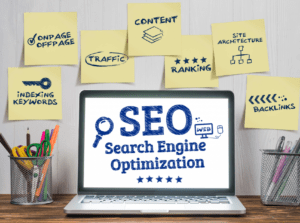




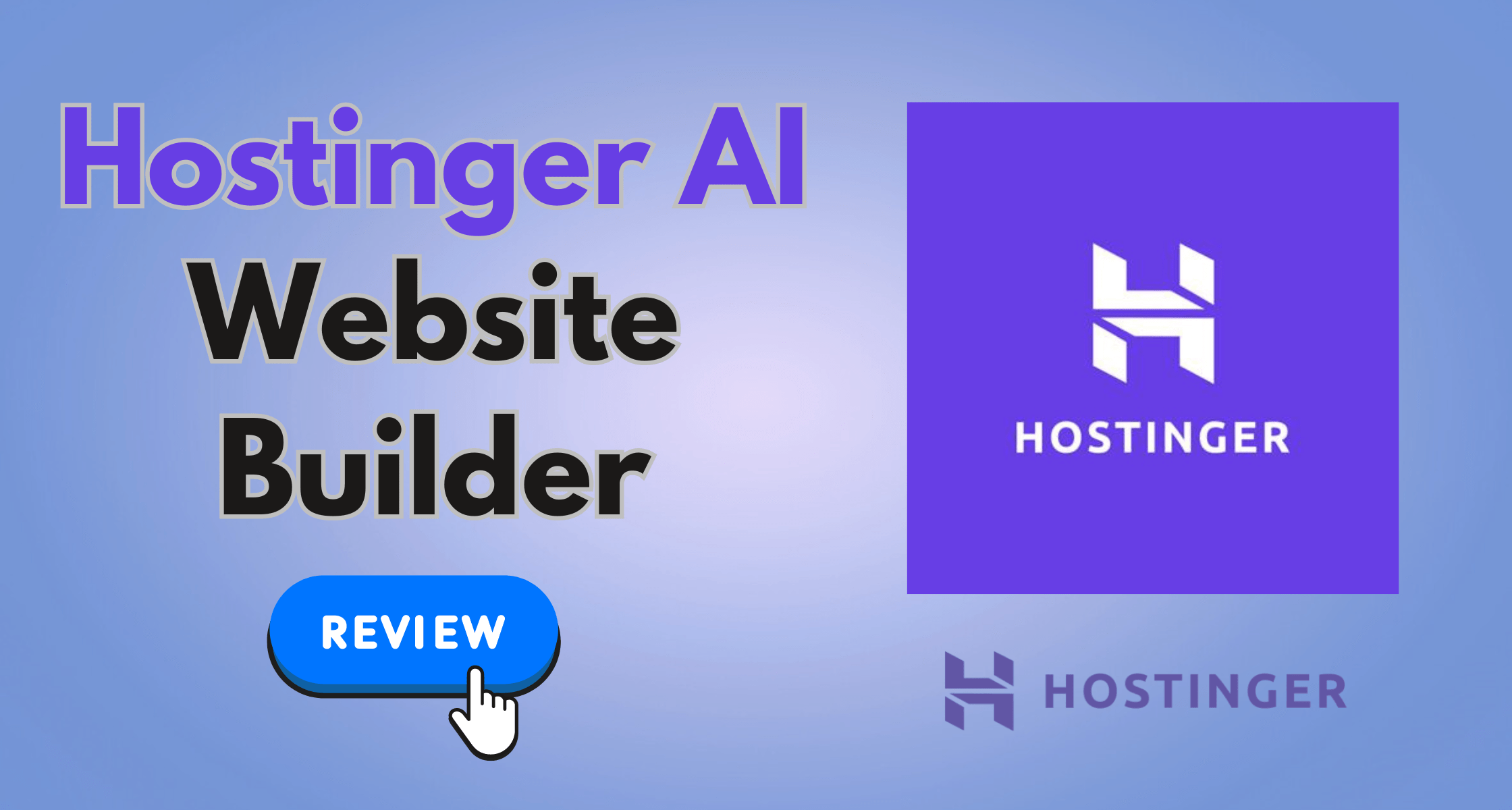
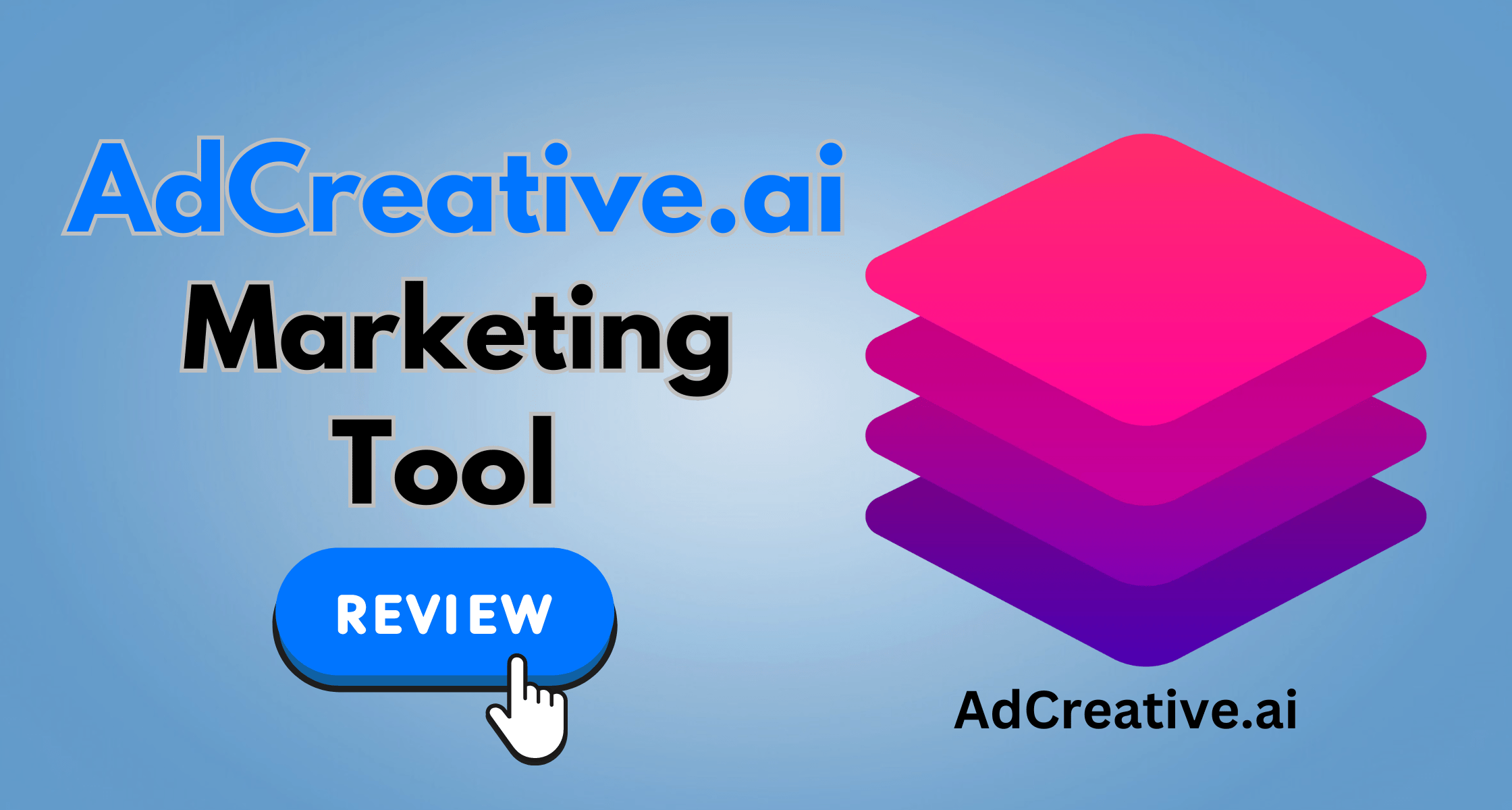
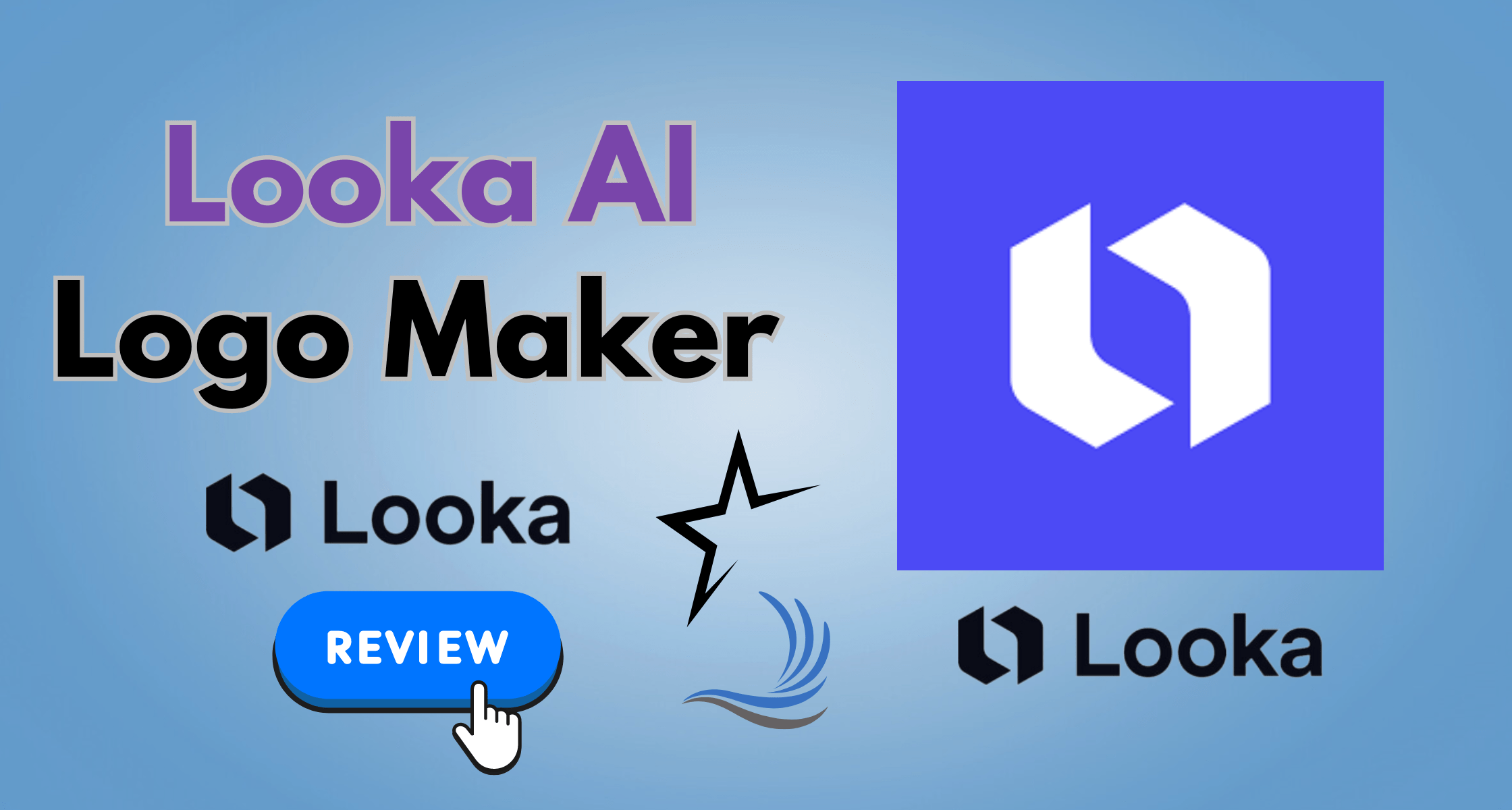


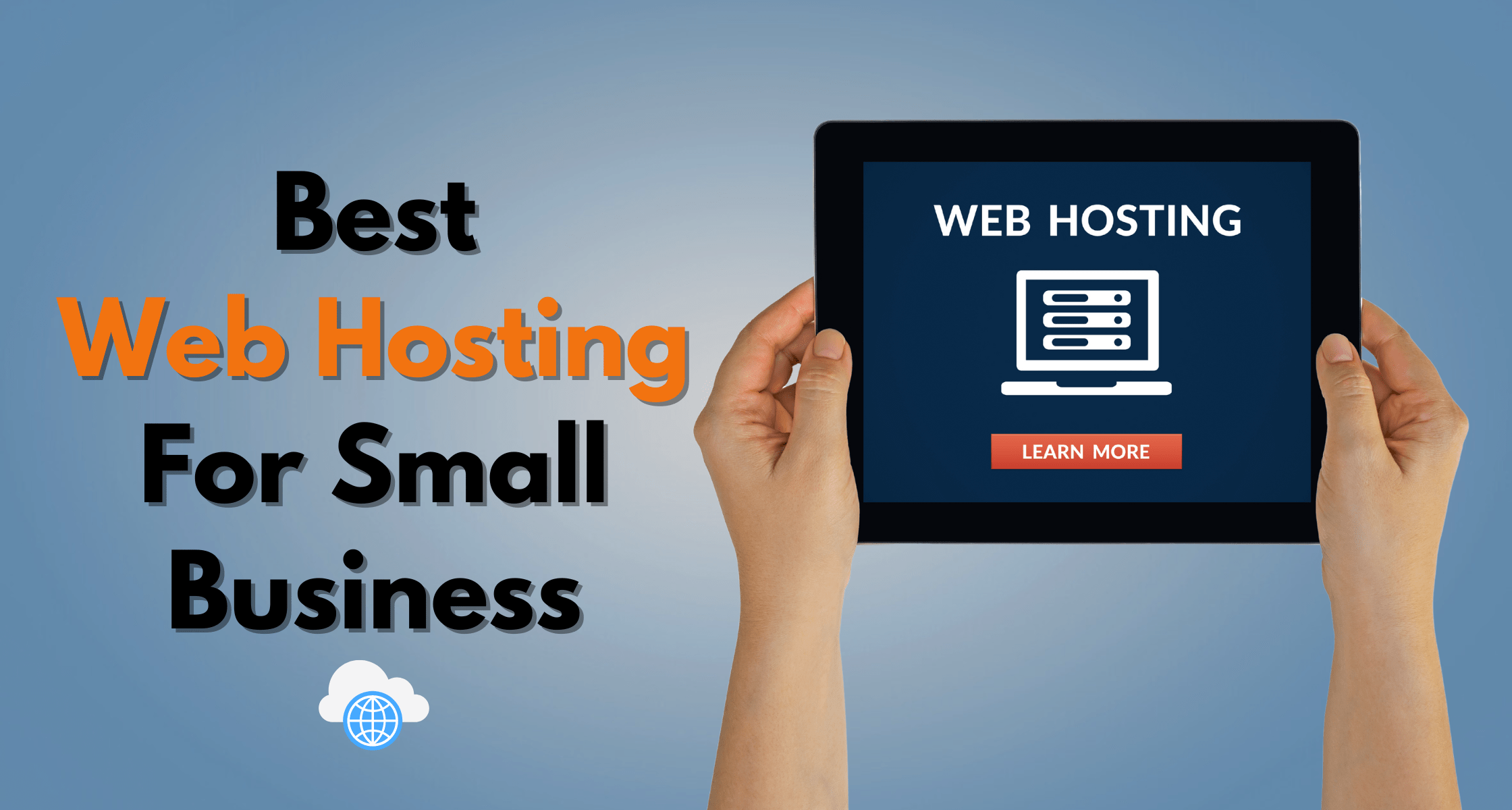
[…] Hyperlocal Social Media Marketing: The Secret Sauce To Crushing Your Competitors! […]
[…] Hyperlocal Social Media Marketing; The Secret Sauce To Crushing Your Competitors! […]
[…] See also "Hyperlocal Social Media Marketing: The Secret Sauce to Crushing Your Competitors!" […]
[…] Hyperlocal Social Media Marketing; The Secret Sauce To Crushing Your Competitors! […]
[…] AI is an AI-powered video generator for website and social media marketing. Because of its unique editing features, you can convert text content into videos and edit video […]
[…] See also "Hyperlocal Social Media Marketing: The Secret Sauce to Crushing Your Competitors!" […]
[…] See also "Hyperlocal Social Media Marketing: The Secret Sauce to Crushing Your Competitors!" […]
[…] is a customer service tool with ticket monitoring, live chat, and social media […]
[…] See also "Hyperlocal Social Media Marketing: The Secret Sauce to Crushing Your Competitors!" […]
[…] See also "Hyperlocal Social Media Marketing: The Secret Sauce to Crushing Your Competitors!" […]